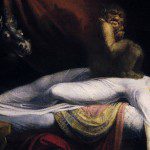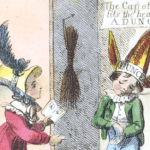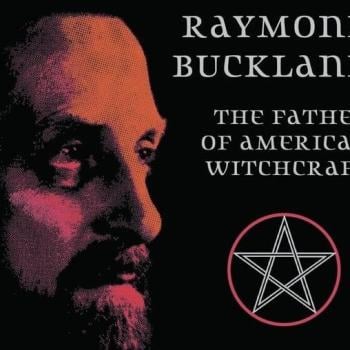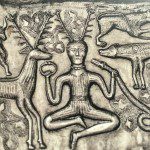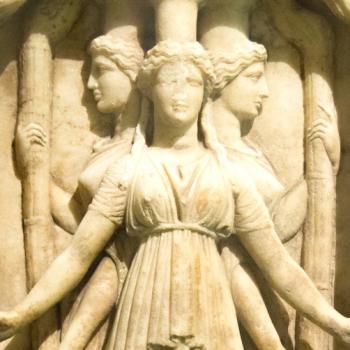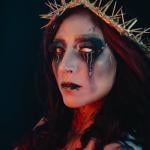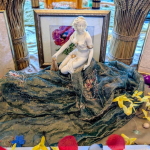Last week I stumbled across an advertisement for Alex Mar’s Witches of America on Twitter. The ad mostly consisted of pictures of Alex and Maxine Sanders along with their initiates. The photos were all in black and white and not surprisingly featured nude English Witches in various ritual moments. They were the kind of pictures I often associate with Witchcraft in my mind, but I also know that they were chosen precisely because they sensationalize Witchcraft. The little “Vine” advertisement of course featured the books release date in stark font, trying hard to look like a promo for American Horror Story.
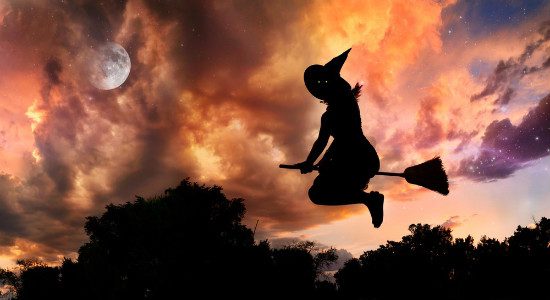
That Mar would use photographs of English Witches to promote her book about American Witches isn’t all that surprising considering the book’s contents. One would expect a book entitled Witches of America to be about Witchcraft as practiced in the United States, but it’s not really about that. As a practicing Witch for the last twenty two years there was very little I identified with in the book. Sure I knew a lot of the names, and had been to a lot of the same places as Mar, but it was not my Witchcraft.
If I were writing a book I was going to call Witches of America I would probably want to meet a lot of Witches and share some experiences with them. I got the feeling that Alex Mar is only interested in Witches she feels are BNPs (Big Name Pagans-one of the stupidest things we’ve ever come up with in our community), and that she’s too good for how the vast majority of people practice the Craft in the United States. She writes dismissively of “eclectic Wicca” all while never bothering to engage in it.
Much of the problem with Mar’s book is that she only looks at Witchcraft in America from very unrepresentative angles. Most of us are not in Coru Cathubodua, The OTO, or pay to study the Feri Tradition. Of course there’s nothing wrong with those groups, but for the most part, they don’t represent what 95% of us do on a daily basis. You can’t write a book about American Witchcraft and then ignore what most American Witches do. (And of course the OTO is not a Witchcraft group, and I don’t think Coru Cathubodua is either, but hey, at least one of the three groups Mar writes about self-identify as Witches.)
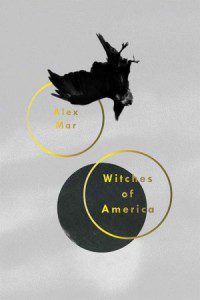 With the exception of her time in Feri I didn’t really recognize anyone in Mar’s book. Sure I know some of the principles involved, but they aren’t people I practice with, and most of all, they aren’t like any of the people I practice with. Mar was in the Bay Area for a lot of this book. Where’s the visit to the Spiral Dance? She could have dropped into a Community Seed Samhain ritual and seen first hand that the Wicca she often mocks in her book really does fucking work.
With the exception of her time in Feri I didn’t really recognize anyone in Mar’s book. Sure I know some of the principles involved, but they aren’t people I practice with, and most of all, they aren’t like any of the people I practice with. Mar was in the Bay Area for a lot of this book. Where’s the visit to the Spiral Dance? She could have dropped into a Community Seed Samhain ritual and seen first hand that the Wicca she often mocks in her book really does fucking work.
For me Witchcraft has always been a source of joy and self-discovery. It’s a way to commune with the Earth, Goddess, God, and my chosen family. When Mar touches the divine she recoils from it. And she never truly finds a chosen family because she seems to always set herself above those who welcome her into their lives. At one point she writes of being in a “coven” with a bunch of strangers. People you just met ten minutes ago do not a coven make. Perfect love and perfect trust my ass.
Mar’s version of Witchcraft is filtered through the prism of the Cool Kids Club. When writing about PantheaCon, an extremely diverse and multifaceted festival, the only people she mentions are famous author types. Let’s not bother to see what the plebeians are up to and perhaps visit the Blue Fairy party. For Mar real Witchcraft in such a setting can only mean hanging out with the prettiest, most popular, most well known Witches. It’s like life in Los Angeles as seen only through the eyes of Johnny Depp and Jennifer Anniston.
Much has been written about Mar’s body-shaming of some individuals in her book, and while that material is certainly there, it’s not quite as prevalent as I was led to believe in some early reviews. I’m not letting Mar off the hook here though, far from it, she’s obsessed with the human body, and dwells on and on at length as to the attractiveness of the people who populate her rather fleeting flirtation with American Witchcraft. Mar runs into some amazing figures in the course of her journey, but seems to discount anyone who does not live up to her standards of beauty and attractiveness.
There were moments in the book, where as a reader I began to think for a moment that “Mar gets it” and then on the next page she’d turn around and shit all over that assumption. She writes about seeing oathbound material during her Feri training and then immediately shares that information with the reader. Emails and conversations are cavalierly quoted and presented, in a way I have trouble imagining any Witch agreeing to. The few times she does show restraint in not shouting an oathbound secret from the mountain top she makes pains to tell you that she’s keeping an oathbound secret. Reading some of these moments just made me feel dirty.
In addition to feeling dirty there were times when Mar just pissed me off with her writing. I know she’s not an occultist, but saying “It’s not much of a leap from the ritual knife of Gerald’s days in Borneo to the athame” just plain shows off her ignorance. Perhaps we have athames in Witchcraft because people have been doing ritual magic for several centuries with knives? It’s just a thought.
I also underlined this phrase while reading the book: “back in the early nineties, before Wicca had been rebranded online as a friendly, earth-loving form of spirituality.” Oh yes, that happened in the 1990’s, back when Starhawk wrote The Spiral Dance in 1979 (a work that in some ways documented the decade-long shift from an occult-only Witchcraft to a more earth-centered tradition). Back when I discovered Witchcraft in the early 90’s (pre-internet in every home) it was already a friendly earth-long spirituality, and had been since the 1970’s.
As you can see, I didn’t much care for this book. It’s not particularly representative of Witchcraft in America, nor is Mar someone I want articulating our Craft to the public at large. Many of the BNPs Mar attached herself to are very different from her in one respect: while they might be seen by some as “famous” or whatever, they are still a part of the community. You can walk up to T. Thorn Coyle anywhere and she will talk to you, and while Morpheus Ravenna is a rockstar, she’s also just a person, and will happily remind you of that.
While I really disliked this book, I feel like my review is the most positive of the ones I’ve seen so far, don’t believe me, see for yourself:
John Beckett John is always level-headed, if you don’t believe me about this book, try John.
Rhyd Wildermuth Rhyd kind of crushes this review.
Segomâros Widugeni This review is not long, but it hits the high points.
Interestingly enough, we all pretty much hate this book for different reasons, and some of the reasons I hated this book, especially the idea of spiritual tourism is covered better above so I left it out of my review. Alex, I hope you find what you are looking for and if you do it far away from the Pagan and magical community all the better.
(Also, there were no Gardnerians profiled in this book! Happy little skyclad Jason dance!)
Post-Script: After reading several bad reviews of this book over the last several days I can imagine some of you will be wondering “why did you bother reading this book Jason?” Fair question. As an arm-chair historian, and someone extremely interested in the history past and present of the magical community, I kind of felt like it was my job to read it. I want to know what people are writing about Witchcraft so I can have an informed opinion of it. I can’t quite have an opinion of this book if I don’t read it for myself.


